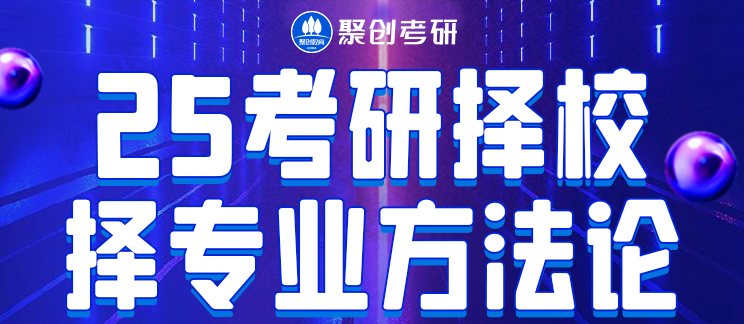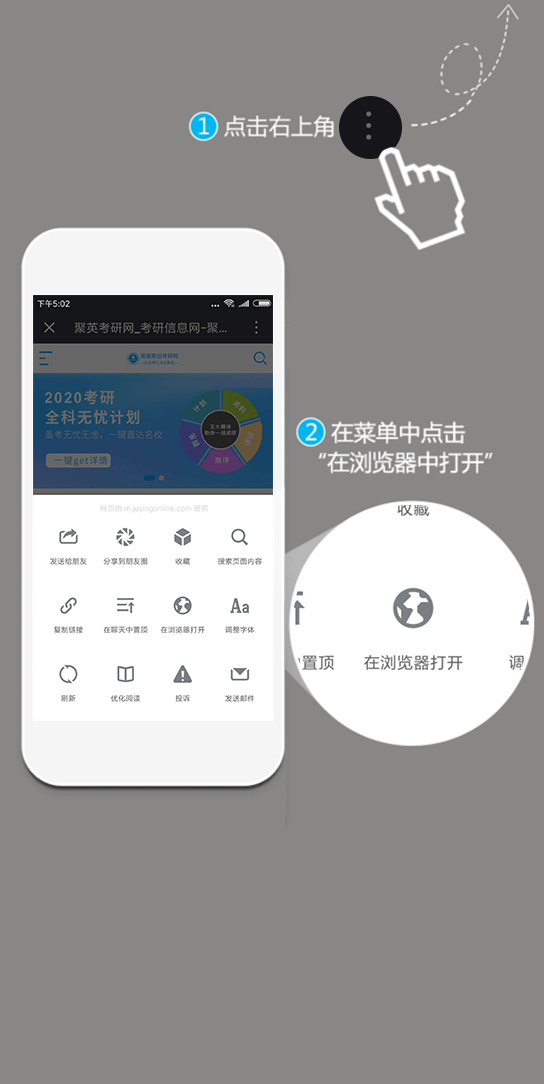上海市2017年硕士研究生入学单独考试英语考试大纲
作者:聚创复旦考研网-王老师 点击量:2305 2018-07-23
据悉,上海市2017年硕士研究生入学单独考试英语考试大纲已公布,聚英复旦大学考研网小编为你整理如下内容:
总则
本考试为上海市各类高等院校招收单独考试硕士研究生而设置。考试主要以《大学英语教学大纲(文、理科本科用)》中对大学英语四级水平的具体要求为根据,测试考生在英语语法、词汇、阅读及翻译等方面的语言应用能力。
考试内容与形式
整份试卷包括试卷一(选择题)和试卷二(非选择题)。
试卷一含以下三个部分:
第一部分词语用法和语法结构(Part I Vocabulary and Structure)
共20题,考试时间为15分钟。本部分全部是多项选择题。跟词语用法相关的题目主要测试考生运用英语词语及短语的能力,考试范围为大学英语四级标准所含的词汇和短语。跟语法结构相关的题目主要测试考生掌握英语语法结构的程度,考试范围包括大学英语四级标准所含的语法内容。答题时,考生需在答题卡上按照要求填涂相应字母。
第二部分阅读理解(Part II Reading Comprehension)
共20题,考试时间为65分钟。要求考生阅读4篇英语文章,总阅读量为1500词左右。每篇文章后有若干问题,考生应根据文章内容从每题四个选择项中选出一个最佳答案。
选题的原则是:
1、体裁多样,可以包括叙述文、说明文、议论文等。文章所涉及的背景知识能为普通大学生理解。
2、文章的语言难度相当于国家大学英语四级统考的相应考题,但篇幅略长。无法猜测而又影响理解的关键词,如超出考生应掌握的词汇范围,用汉语注明词义。
阅读理解部分主要测试上述能力:
A. 掌握所读文章的主旨和大意;
B. 了解说明主旨和大意的事实和细节;
C. 既理解字面意思,又能根据所读材料进行一定的判断和推论。
第三部分完形填空(Part III Cloze)
共20题,考试时间为35分钟。完形填空所用的文章长度为300词左右,难度略低于阅读理解的篇章。文中共有20处空白,每个空白有四个选项。考生需在所给的四个选项中选一个词或词组进行填空。完形填空的目的是测试考生综合应用英语的能力。
试卷二含以下两个部分 (在整份试卷中为第四和第五部分):
第四部分汉译英(Part I Chinese-English Translation)
共5题,考试时间为30分钟。考生需将英语译文写在答题卡相应的位置上。供翻译的中文句子具有以下特点:
1. 难度适当,不含冷僻词或专业性过强的单词;
2. 长度适中,结构便于考生套用英语常用句型;
3. 各题互不相关,内容和句式兼顾文、理各科考生。
汉译英的目的是测试学生的英语书面表达能力。
第五部分英译汉 (Part II English-Chinese Translation)
共5题,句子取自于短文。英译汉所用的短文的长度为300词左右,难度与阅读理解的篇章相同。考试时间为35分钟。考生须在理解短文的基础上,把划线部分的英语句子译成中文,并将中文译文写在答题卡相应的位置上。供翻译的英文句子具有以下特点:
1. 难度适当,不含冷僻词或专业性过强的单词;
2. 长度适中,结构应是英语常用句型;
3. 内容和句式兼顾文、理各科考生。
英译汉的目的是测试学生的理解和表达能力。
答题和计分方法
试卷一中的客观题全部用填涂的方式答题,即要求考生在每题四个选择项中选出一个最佳答案,并在答题卡上该题的相应字母上填涂。试卷一上选择题的答案必须用2B铅笔涂写。考生必须正确填写答题卡上的姓名和考生编号,并在考生编号下面对应的数字上填涂。如考生李明的考生编号是210318000111111,他的考生编号的填写方法如下:
|
考生编号(左对齐) |
||||||||||||||
|
2 |
1 |
0 |
3 |
1 |
8 |
0 |
0 |
0 |
1 |
1 |
1 |
1 |
1 |
1 |
|
[0] |
[0] |
[ |
[0] |
[0] |
[0] |
[ |
[ |
[ |
[0] |
[0] |
[0] |
[0] |
[0] |
[0] |
|
[1] |
[ |
[1] |
[1] |
[ |
[1] |
[1] |
[1] |
[1] |
[ |
[ |
[ |
[ |
[ |
[ |
|
[ |
[2] |
[2] |
[2] |
[2] |
[2] |
[2] |
[2] |
[2] |
[2] |
[2] |
[2] |
[2] |
[2] |
[2] |
|
[3] |
[3] |
[3] |
[ |
[3] |
[3] |
[3] |
[3] |
[3] |
[3] |
[3] |
[3] |
[3] |
[3] |
[3] |
|
[4] |
[4] |
[4] |
[4] |
[4] |
[4] |
[4] |
[4] |
[4] |
[4] |
[4] |
[4] |
[4] |
[4] |
[4] |
|
[5] |
[5] |
[5] |
[5] |
[5] |
[5] |
[5] |
[5] |
[5] |
[5] |
[5] |
[5] |
[5] |
[5] |
[5] |
|
[6] |
[6] |
[6] |
[6] |
[6] |
[6] |
[6] |
[6] |
[6] |
[6] |
[6] |
[6] |
[6] |
[6] |
[6] |
|
[7] |
[7] |
[7] |
[7] |
[7] |
[7] |
[7] |
[7] |
[7] |
[7] |
[7] |
[7] |
[7] |
[7] |
[7] |
|
[8] |
[8] |
[8] |
[8] |
[8] |
[ |
[8] |
[8] |
[8] |
[8] |
[8] |
[8] |
[8] |
[8] |
[8] |
|
[9] |
[9] |
[9] |
[9] |
[9] |
[9] |
[9] |
[9] |
[9] |
[9] |
[9] |
[9] |
[9] |
[9] |
[9] |
试卷二翻译题只要将句子写在答题卡相应的位置上即可。
整份试卷的题目数、计分和考试时间列表如下:
|
序号 |
题号 |
各部分名称 |
题目数 |
计分 |
考试时间 |
|
试卷一 |
|
|
|
|
|
|
I |
1-20 |
词语用法和语法结构 |
20 |
10 |
15 |
|
II |
21-40 |
阅读理解 |
20 |
40 |
65 |
|
III |
41-60 |
完形填空 |
20 |
20 |
35 |
|
试卷二 |
|
|
|
|
|
|
IV |
61-65 |
汉译英 |
5 |
15 |
30 |
|
V |
66-70 |
英译汉 |
5 |
15 |
35 |
|
合计 |
70 |
100 |
180 |
||
附录一
考生注意事项
1、
2、
考生必须严格遵守各项考场规则。
答题前,考生应按准考证上的有关内容填写答题卡上的“考生姓名”、“报考单位”、“考生编号”等信息。
3、
选择题的答案必须涂写在答题卡相应题号的选项上,非选择题的答案必须书写在答题卡指定位置的边框区域内,写在其他地方无效。
1)
词语用法和语法结构(1-20题)、阅读理解(21-40题)及完形填空(41-60题)三部分的答案必须填涂在答题卡上,汉译英(61-65题)和英译汉(66-70题)两部分的答案写在答题纸上。
2)
书写部分(汉译英和英译汉)必须使用黑色签字笔,涂写部分必须使用2B铅笔。注意字迹清楚。不能用修正液。
4、
考试结束,将答题卡和试题一并装入试卷袋中交回。
附录二
试题指令及问题举例
Paper One
Part I. Vocabulary and Structure (10 points, 15 minutes)
Directions: There are 20 incomplete sentences in this section. For each sentence there are four choice marked [A], [B], [C] and [D]. Choose the ONE answer that best completes the sentence. Then mark the corresponding letter on the Answer Sheet with a single line through the center.
Example:
I have been to the Great Wall three times ________ 1980.
[A] about[B] during
[C] since[D] for
The best choice is “C”, so your answer should be: [A] [B] [C] [D]
1. ________ Eric started a job, he would not stop ________ it was finished.
[A] Once, till[B] Each time, once
[C] Since, when[D] The moment, as
2. The proposed law, while brilliantly ________, has been poorly devised to do the
job at hand.
[A] confirmed[B] promoted
[C] deceived[D] conceived
……
Key: 1. A 2. D
Part II. Reading Comprehension (40 points, 65 minutes)
Directions: There are 4 passages in this part. Each passage is followed by some questions or unfinished statements. For each of them there are four choices marked [A], [B], [C] and [D]. You should decide on the best choice and mark the corresponding letter on the Answer Sheet with a single line through the center.
(1)
If you’ve been married to the world’s loudest snorer for nearly four decades, you’re either a saint or you’re deaf.
Julie Switzer is a little of both.
On July 4, the 61-year-old British homemaker will celebrate her 40th anniversary with her husband Mel, a cab driver whose snoring has been measured at 92.5 decibels—louder than a police siren.
Until he found a treatment, flight attendants would ask him not to sleep on planes. Eight of his neighbors sold their homes in one 10-year period. Only his wife stood by his side.
“My wife and I love ach other,” he says. “And she is deaf in one ear.”
Julie’s condition had no connection to her husband’s strident snoozing (打盹儿). But even with diminished hearing, she found it hard to sleep—and though to get up each day to get their two boys off to school. “I just thought most men sound like a electric saw in the bedroom,” she says.
After two decades of sleeplessness, Julie entered Mel in a local contest, sponsored by a British newspaper in 1984, to find the loudest snoring husband in the United Kingdom. Until then, Mel had not realized the scope of his snore.
The contest turned out to be the best thing she ever did. In one brave stroke, Julie turned her husband into an international celebrity of sorts. Suddenly, she and Mel were flying to Japan, so that doctors could measure his snoring on national TV.
“I guess there are better reasons to be famous,” Mel says. “But if people are sending you to Tokyo, why fight it?”
The folks at Guinness were quick to certify him, and all the attention brought hundreds of would-be remedies—including one that finally worked.
About four years ago, New York entrepreneur Robert Ross gave Mel a Chinese herbal concoction that he now markets throughout North America as Y-snore.
Y-snore changed the Switzers’ life. Just a few drops in the nose and Mel is silent as a lamb. Finally, a peaceful night for his wife.
1. Julie Switzer is considered somewhat a saint because ________.
[A] she has been an excellent homemaker all the time
[B] she has been married to Mel for 40 years
[C] she turned a deaf ear to her husband’s snoring
[D] she tolerated the loudest snoring in the world for more than 40 years
2. What did Julie think of her husband’s snoring before she entered him in a local contest?
[A] She thought it was as loud as a police siren.
[B] She felt bored.
[C] She thought it was just a normal phenomenon.
[D] She was anxious to find a cure for her husband’s snoring.
3. Entering her husband in the snoring contest was the best thing Julie ever did
because ________.
[A] Mel became a famous person as a result of the contest
[B] Mel became rich after winning the first prize
[C] then she began to know how loud her husband’s snoring was
[D] she managed to prove to the world that her husband was a very brave man
4. What does Mel think of his own success in the contest?
[A] He believes that it is a great victory.
[B] He is glad to take the opportunity to travel.
[C] He feels embarrassed to be known as “the world’s loudest snorer.”
[D] He feels proud of himself and his wife.
5. According to what is said in the passage, Y-snore is ________.
[A] an interesting question Robert Ross asked Mel
[B] a Japanese medical instrument that Mel bought in Japan
[C] the name of a Chinese drug store that can be found in North America
[D] a kind of medicine that stops snoring effectively
……
Key: 1. D 2. C 3. A 4. B 5. D
Part III. Cloze (20 points, 35 minutes)
Directions: In this part there is a passage with 20 blanks. For each blank there are four choices of words (phrases) marked A), B), C), and D). You are asked to choose the ONE word (phrase) that best fits into the passage. Then mark the corresponding letter on the Answer Sheet with a single line through the center.
At the moment some 170,000 young people throughout Britain are suffering what is potentially the most tense and anxious time of their lives. That is the ___1___ of students currently preparing to ___2___ their A-levels–examinations which will decide ___3___ a student proceeds smoothly on to the next step of the academic ___4___ or whether six years of work at secondary –school will be spent in the bitter disappointment of failure. ___5___ the medical “stress-charts” examinations ___6___ somewhere behind a death ___7___, a divorce or even the loss of a job; ___8___ the symptoms of anxiety are all the more weakening ___9___ they are before the event ___10___ after it, and may ___11___ themselves be enough to ___12___ the student’s worst fears failing.
……
1.A) amountB) numberC) accountD) members
2.A) sit uponB) sit downC) sit forD) sit over
3.A) howB) whatC) whyD) whether
4.A) careerB) purposeC) projectD) ladder
5.A) AtB) AboveC) WithinD) In
6.A) successB) rankC) line upD) link
7.A) in the houseB) at homeC) in the familyD) in homes
8.A) thereforeB) thusC) butD) as a result
9.A) soB) becauseC) whenD) if
10.A) more thanB) even moreC) rather thanD) less than
11.A) ofB) onC) inD) from
12.A) bring backB) bring aboutC) bring alongD) bring through
……
Key:
1. B 2. C 3.D 4. D 5. D 6. B
7. C 8. C 9. B 10. C 11. C 12. B
Paper Two
Part IV Chinese-English Translation (15 points, 30 minutes)
Directions: Translate the following sentences into English and write your translation on Answer Sheet 2.
1. 我们不要把关心老人只停留在口头上,要办实事帮助他们解决困难。
2. 一个人的成功在于勤奋,也在于机会。杰佛逊(Jefferson)就是一个很好的例
子。
3. 使用一个普通灯泡时,只有5%的电转化为光,其余的都作为热量浪费掉了。
……
Key:
1. We should do more than talk to care for the old, and take actual measures to help
them solve their difficulties.
2. One’s success lies in diligence, as well as in opportunities. Jefferson is a case in
point.
3. With a standard bulb, only 5% of the electricity is converted to light—the rest is
wasted away as heat.
Part V English-Chinese Translation (15 points, 35 minutes)
Directions: There is one passage in this part. Read the passage and translate the underlined sentences into Chinese. Write your translation on Answer Sheet 2.
Geniuses look at problems in many different ways. Genius often comes from finding a new perspective that no one else has taken. Leonardo Da Vinci believed that, to gain knowledge about the form of a problem, you begin by learning how to restructure it in many different ways. He felt that the first way he looked at a problem by looking at it from on perspective and move to another perspective and still another. (1) With each move, his understanding would deepen and he would begin to understand the essence of the problem.
Geniuses make novel combinations. Like the highly playful child with a bucket of building blocks, a genius is constantly combining and recombining ideas, images, and thoughts into different combinations in their conscious and subconscious minds. Consider Einstein’s equation, E=mc2. Einstein did not invent the concepts of energy, mass, or speed of light. (2) Rather, by combining these concepts in a novel way, he was able to look at the same world as everyone else and see something different.
……
Key
1. 每更换一次视角,他的理解就会加深,并开始领悟问题的实质。
2. 事实是,通过用一种新颖的方式来组合这些概念,他能够在同其他人审视同一个世界时,看到一些与众不同的东西。
以上是聚创考研网为考生整理的"上海市2017年硕士研究生入学单独考试英语考试大纲"的相关考研信息,希望对大家考研备考有所帮助! 备考过程中如有疑问,也可以添加老师微信juchuang911进行咨询。
免责声明:本网站发表的部分公开资料来源于互联网,目的在于传递更多信息及用于网络分享,并不代表本站赞同其观点和对其真实性负责。聚创考研网尊重版权,如有侵权问题,请及时联系(WX:juchuang911)





